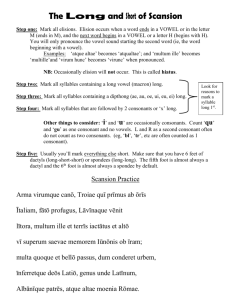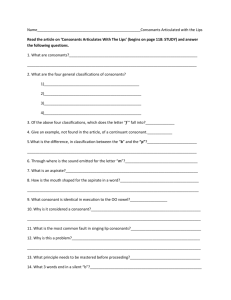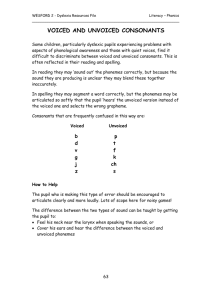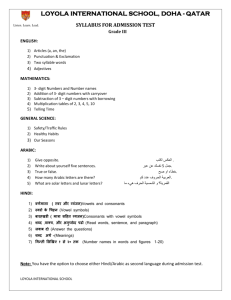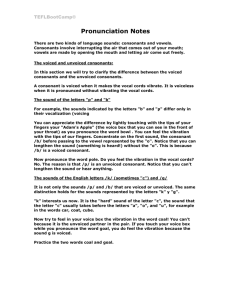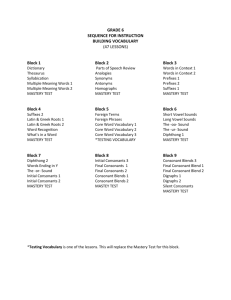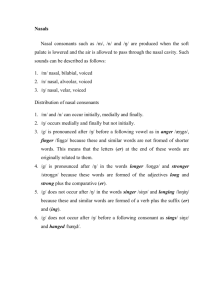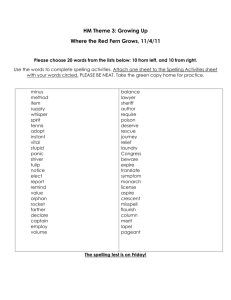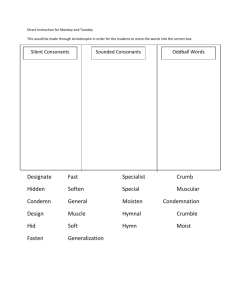Diction Terminology
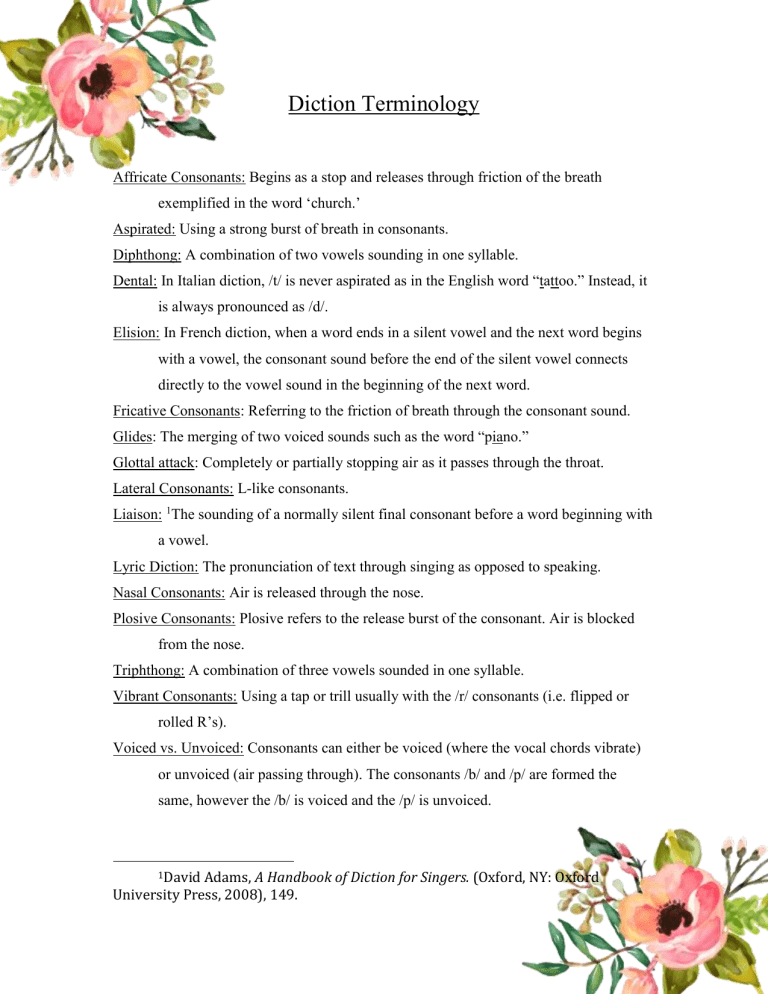
Diction Terminology
Affricate Consonants: Begins as a stop and releases through friction of the breath exemplified in the word ‘church.’
Aspirated: Using a strong burst of breath in consonants.
Diphthong: A combination of two vowels sounding in one syllable.
Dental: In Italian diction, /t/ is never aspirated as in the English word “tattoo.” Instead, it is always pronounced as /d/.
Elision: In French diction, when a word ends in a silent vowel and the next word begins with a vowel, the consonant sound before the end of the silent vowel connects directly to the vowel sound in the beginning of the next word.
Fricative Consonants: Referring to the friction of breath through the consonant sound.
Glides: The merging of two voiced sounds such as the word “piano.”
Glottal attack: Completely or partially stopping air as it passes through the throat.
Lateral Consonants: L-like consonants.
Liaison:
1
The sounding of a normally silent final consonant before a word beginning with a vowel.
Lyric Diction: The pronunciation of text through singing as opposed to speaking.
Nasal Consonants: Air is released through the nose.
Plosive Consonants: Plosive refers to the release burst of the consonant. Air is blocked from the nose.
Triphthong: A combination of three vowels sounded in one syllable.
Vibrant Consonants: Using a tap or trill usually with the /r/ consonants (i.e. flipped or rolled R’s).
Voiced vs. Unvoiced: Consonants can either be voiced (where the vocal chords vibrate) or unvoiced (air passing through). The consonants /b/ and /p/ are formed the same, however the /b/ is voiced and the /p/ is unvoiced.
1 David Adams, A Handbook of Diction for Singers. (Oxford, NY: Oxford
University Press, 2008), 149.


